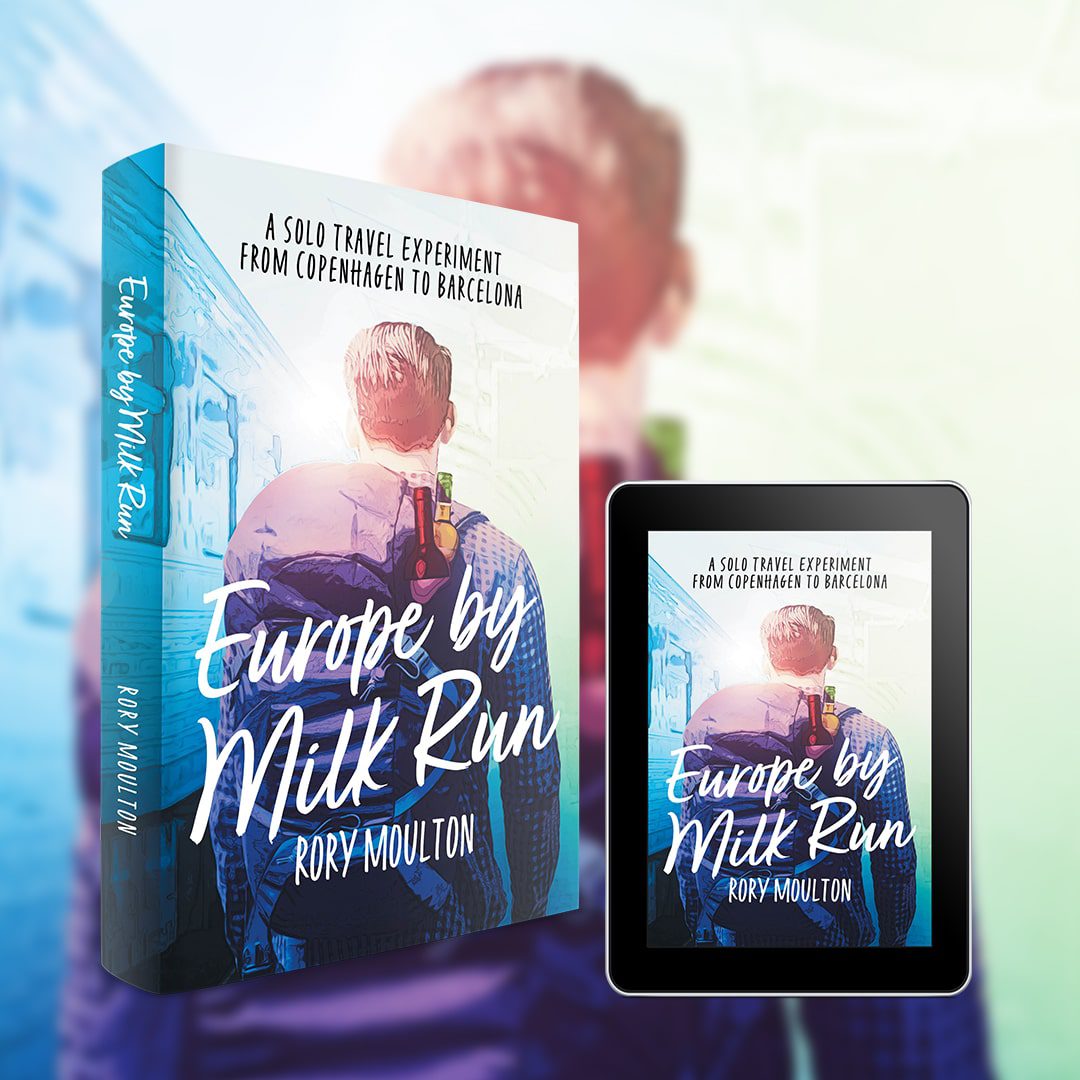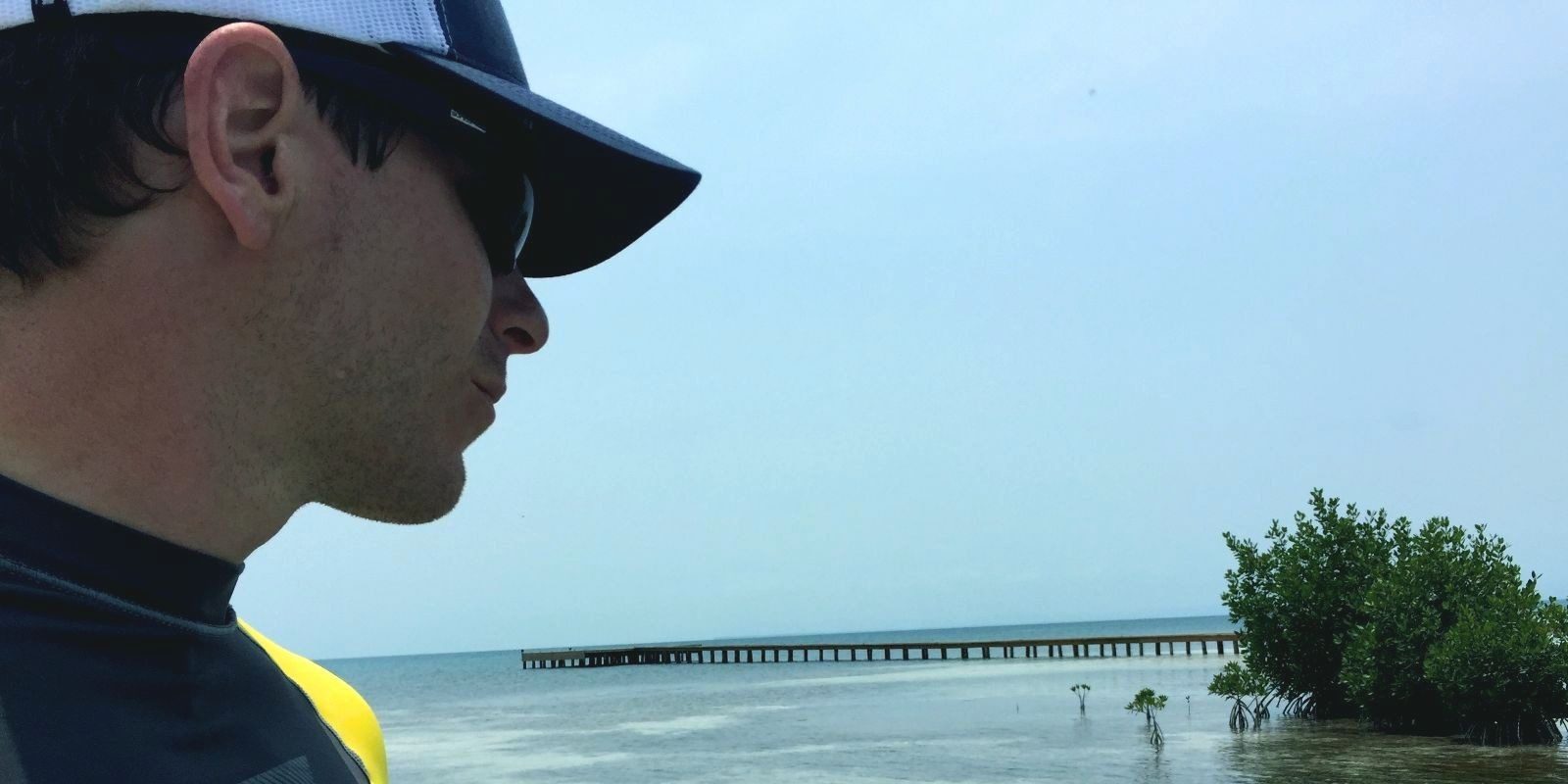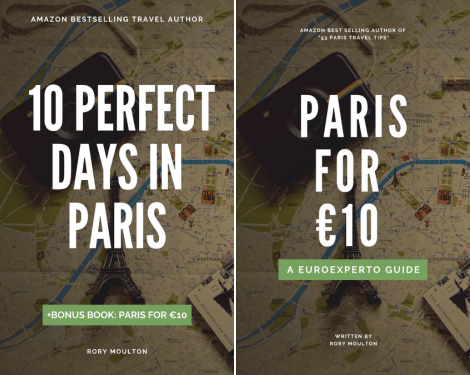In this hilarious and gripping solo travel memoir, Europe by Milk Run author rides slow trains, explores off-beat neighborhoods and attractions, eats at restaurants so lost in time he’s amazed they know when to open and befriends unforgettable characters, some of whom actually like him. Rory embarks with little more than a backpack, Eurail Pass and a vague notion of which direction he should be traveling. Along the way, he:
- repels a cat invasion in Amsterdam,
- loses all his money and documents,
- witnesses a magical sunset in a ruined church,
- meets WWII-doubting Kiwis,
- investigates a haunted Spanish prison,
- explores Europe’s most beautiful, albeit abandoned, train station
- and much more…
Europe by Milk Run shows that traveling Europe at ground level reveals the Continent’s greatest treasures.
Europe by Milk Run Excerpt 1
Setting: In a tiny, candlelit restaurant on Île Saint-Louis in Paris, I struck up a conversation with the owner.
“My husband and I, we open in 1992,” she smiled and paused, her eyes glazed over in memories. “He was a chef. We were starting a family. We say if we want a family but have to work all day, we should do it together.”
A new pork, duck and bean fragrance signaled the chef had pulled my cassoulet from the oven. We both lifted our noses.
“Was it difficult?” I asked.
Her smile vanished. “Difficult, yes. We put everything into it. Money, time, love, heart, everything. Michel, my husband, passed away four years ago. He,” she tilted her head toward the kitchen, “is not as good. Un moment, monsieur.”
She returned with the house cassoulet, traditionally a whatever’s-in-the-pantry dish whose ideal consumer, according to Julia Child, is “a 300-pound blocking back who has been splitting firewood nonstop for the last twelve hours on a subzero day in Manitoba.”
Duck meat slipped from the bone as I asked, “What changes have you seen in Paris in all those years?”
“Humph, plus ça change,” she snorted and tapped the reservation book, organizing her thoughts.
“We have many more visitors, yes. But where in Europe doesn’t? Now, I see different tourists—Chinese, Arab, Indian. With the EU, we have even more Europeans living here. Of course, technology has changed. Everyone walks around looking at their phones. Why come to Paris to look at your phone?” We laughed.
“And I must have a website! Put my restaurant on other websites and these apps. N’importe quoi! Many changes. Even so, always Paris.” She stared out the window.
“Yep, always Paris,” I concurred, chasing my last bite of cassoulet with a swig of red wine, thinking back to my earlier candle-lighting at Notre-Dame.
Now a half-dozen women with painted faces and tight skirts inhaled cigarettes and adjusted their nylons when I returned to my Airbnb on narrow rue Blondel. Wearing three-inch black heels with matching mini-skirt and a leopard-skin blouse, one leaned against the wall a few feet from my doorway, staring me up and down as I fumbled with unfamiliar keys. Why does a one-door apartment require seven keys?
“Mon Airbnb,” I informed her, finally inserting the correct key.
“Oui,” she replied, exhaling cigarette smoke as I pushed inside the apartment.
Elsewhere in Paris, street prostitution was declining, but not on rue Blondel, a hunch I later confirmed with prodigious Google results. This little street, barely more than an alleyway, celebrates a notorious history of prostitution and brothels that would shock even modern Moulin Rouge performers. Tolerated since the Middle Ages, maisons closes (“closed houses”—so named because they kept the shutters closed 24/7) flourished during the naughty and decadent Belle Époque era that lasted from the late 1800s until World War I.
The neighborhood’s most famous brothel, a lavish Belle Époque affair called Aux Belles Poules (“The Beautiful Chicks”), once entertained clientele just a couple blocks from my Airbnb. Known for its elaborate erotic wall mosaics and equally elaborate sex shows (euphemistically known as “living paintings”), Aux Belles Poules closed along with all Paris bordellos in 1946 during a postwar morality crusade. Almost overnight, Paris’ 30,000 horizontales became streetwalkers.
While shrewd developers renovated most of Paris’ 224 formerly legal brothels to attract more, uh, discreet tenants, Aux Belles Poules remained in original condition, erotic wall mosaics and all. Different commercial and residential tenants moved through its halls over the years, but the sex walls remained. It’s now a registered historic monument and event venue (available for private parties should the inclination strike you).
I flipped open my laptop and plied my trade, while on the opposite side of the stone-and-mortar wall, the prostitutes of rue Blondel plied theirs.
Europe by Milk Run Excerpt 2
Setting: On a slow train somewhere between Zaragoza and Barcelona
I sliced through the white Penicillium candidum mold that gives the Benasque cheese its chalky rind. The artisan cheese promised it was “moldeado a mano,” molded by hand. The hard, unpasteurized cow’s milk had a buttery texture and a tangy, salty flavor. Its earthy aroma filled the carriage. I swished the slice down with a sip of Somontano and removed the casing from the wild boar (“jabali”) sausage. The 330-gram link opened with little effort after pulling the blue-yellow starter string. The informative sausage wrapper showed precisely how the sausage gets made, depicting a hunting dog assaulting an irate wild boar. The chorizo-style link tasted robust and nutty with a hint of paprika. I sliced the sausage and cheese and placed them on bread chunks, chasing each wedge with a gulp of wine. For dessert, I bit into a melocotón de calanda, Aragón’s famous peach variety. It exploded in my mouth, sending juices down my chin. Oh, so this is what a peach should taste like, I thought.
As I refilled my plastic cup, an elderly man embarked at Tarragona, and I had my first seat mate of the entire journey. He slid a well-used cerulean-blue suitcase into the overhead storage.
“Want some?” I asked, pointing to the Somontano. It was several minutes after 11 a.m. and the morning wine had awakened my Spanish.
“Yes, thank you, but only a little,” he replied, pinching his forefinger and thumb together.
I withdrew the other clear plastic cup I’d re-appropriated and filled it an inch high with the currant-colored tipple. Víctor savored the Somontano, remarking, “Bien, bien,” after each sip.
“I’m visiting my son in Barcelona,” he said. “And you?”
“Visiting Barcelona for a couple days, then flying home to the States.”
“Ah, yes, okay. That explains your American Spanish. At first, I thought you were English,” he smiled and sipped his wine.
We chatted about our families, my colonial Spanish colliding with his Castilian, and showed each other photos, which I did on my phone while he pulled out prints from his wallet. He had two sons and a daughter. One son and the daughter lived in Germany. The conversation moved to Spain’s economy (“patético”), politics (he voted for Podemos) and history, a topic for which he displayed particular enthusiasm. We discussed Canfranc, Basques, Catalans and, of course, the Franco dictatorship, a cloud which seems to hover over all Spanish history discussions.
“Spain is a country,” he said, finishing his wine refill and dabbing his lips with a cocktail napkin, “where the past is always present.”

ONLY 99¢
For a limited time






